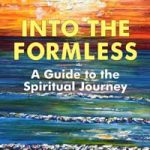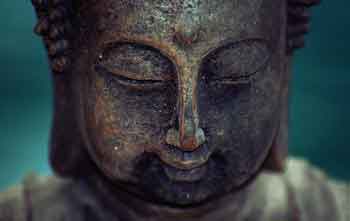
An effective spiritual practice is the foundation for real spiritual progress. Learn spiritual practices that will enable you to still the mind and draw closer to the divine.
The list of spiritual practices is followed by a description of each practice.
LIST OF SPIRITUAL PRACTICES
- Space
- Transitioning
- Being the Observer
- Focusing on the Energetic Body
- Immersing Yourself in Nature
- Meditation
- Mantras
- This Moment
- Being What You Already Are
- Self-Enquiry
- Surrender
- Prayer
- Aligning with Daily Energetic Shifts
- Visiting Holy Places
- Selfless Service
DESCRIPTION OF EACH SPIRITUAL PRACTICE
This content is an excerpt from the book Into the Formless by Brian D. Stephens.
Space

Space is a way of describing the universal consciousness that sustains creation. It is everywhere. Yet while under the ego’s influence, people are unaware of it.
In the external world, they focus on objects and not the space in which the objects exist. Internally, their attention is consumed by thoughts. They are oblivious to the space (or consciousness) that enables them to perceive reality.
Space can act as an opening into the formless. Focus on the space you perceive in the external world or that you feel within. Your thoughts will gradually subside as you become immersed in an all-pervading stillness.
Transitioning
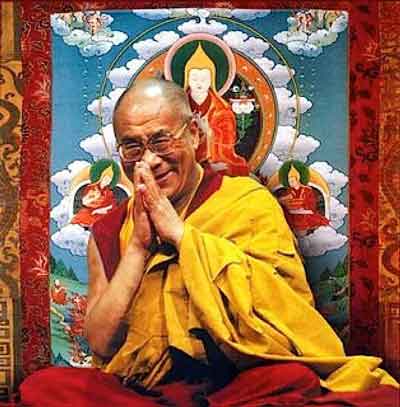
Your internal and external reality is constantly changing. There are always new forms, whether they are thoughts or external objects, to capture your attention.
Between different experiences there is a brief interval between one thing ending and a new one beginning. When one thought ends, there is a moment before the next thought begins. When you stop looking at one object, there is a pause before your attention rests on another object. When you complete a task, there is a break before you start something else.
Within the intervals, your attention is no longer captivated by the world of form. But the intervals are so fleeting that they are usually overlooked. By intentionally focusing on them, you can connect with Source.
After you learn how to connect, discipline yourself to maintain that state throughout the day, regardless of what is happening in your internal and external reality. Do not allow the ego to lose itself in one thing after another. Instead, transition from one moment to the next while staying in touch with the deeper truth.
Know the pure state, your own real nature, by keenly observing the interval between two thoughts.
— Muruganar
Being the Observer
God is simultaneously each of the life forms within creation, immersed in their own reality, and the infinite awareness that observes and guides creation. Be the observer. Withdraw your attention from your life experiences so that you can align with your own infinite nature.
Take a mental and energetic step back from what is happening within and around you. Notice thoughts arising in your mind without allowing them to grab your attention. Watch and listen to the external world without mentally describing what you perceive. Be there as the witness of your life instead of being caught up in what is happening in your life.
Focusing on the Energetic Body
The energetic body gives life to the physical body. Focusing on it moves your attention inward and gradually stills your mind, so you can perceive the formless unity.
Start by sitting quietly. Place your attention on different parts of your body. What you feel when you are not moving is the energy that sustains your physical form. Then expand your awareness to include the entire energetic body. Hold your attention there and eventually the formless level of reality will reveal itself.
There are meditation practices that move energy through
different parts of the energetic body, such as the chakras and meridians. These
practices can lead to unexpected shifts in your energetic form that adversely
affect you, both physically and psychologically. Learn meditation and energy movement
practices from an enlightened
teacher, so you don’t become unnecessarily delayed in your spiritual
development.
Immersing Yourself in Nature

Nature exists in harmony with the divine. Trees, plants, and animals don’t have fully-developed egos to impede their connection with Source.
Through nature, many seekers are able to perceive the deeper reality for the first time. Take a walk in the woods, in a field, or by the ocean. Allow yourself to be enveloped by your surroundings, and you will discover the formless that is hiding just below the surface of every form.
Civilization is a physical expression of the ego. Try to go somewhere each day that is free of human influence and the countless distractions of modern technology. Go to a place where the simplicity of nature frees you from the thinking mind.
Meditation
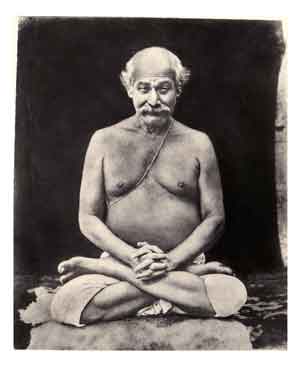
Meditation is a popular practice for gradually stilling the mind and connecting with Source. Seekers have varying degrees of success with meditation, depending on the technique they use and their current level of spiritual development.
There are many different meditation techniques taught by Hindus and Buddhists. For instance, you might want to try kriya yoga or self-enquiry, which I have discussed in other articles. In this section, I’ll describe what the various meditation practices have in common and how you can incorporate meditation into your spiritual path.
Training the Mind
For the beginning seeker, meditation is a tool for training the undisciplined mind. When done correctly, meditation combines a heightened state of awareness and tremendous relaxation. The mind remains balanced, less inclined to be disturbed by arising thoughts.
Most meditation practices are based on concentration. By focusing on a single thing, your mind is less inclined to jump from one thought to the next and gradually quiets down. Then you can perceive the deeper truth.
Many seekers keep their eyes closed during meditation and place their attention on an internal form. For instance, you may turn your gaze to the sixth chakra, located just above the eyebrows, or silently repeat a mantra.
You may find it easier to keep your eyes open and concentrate on an external object, such as a flower or the image of a saint. Focusing the eyes gently, instead of staring intently, reduces the energy you project out into the world and helps draw your attention inward.
Focusing on the Breath
Most of us are unaware of the air that is constantly entering and exiting our bodies. By becoming conscious of your breath, you can train your mind and come into alignment with the formless reality.
While meditating, feel the air entering your body on the inhale breath and exiting your body on the exhale breath. When a thought arises in the mind, return your attention to the breath, and allow the thought to fade away.
The gap between breaths is an opening into Source.
Focus on the short cessation in breathing that occurs
between the end of the inhale and the beginning of the exhale, as well as between
the end of the exhale and the beginning of the inhale. As you do, you will be
drawn into the stillness.
Standing and Walking Meditation
Meditation is most commonly practiced in a seated position. Many seekers learn how to sit quietly in meditation and connect with Source. Then they regress into unconscious behavior while carrying out the duties of daily life.
Through a standing or walking meditation practice, you learn how to remain focused on the formless while also participating in the world of form. You learn how to integrate your internal and external life and remain conscious throughout the day.
At first, you may find it challenging to stay in touch with the deeper reality while your attention is also on the external world. Try to be the observer, and perceive external objects without describing them internally. If you find your mind wandering from thought to thought, focus on one thing in order to still your thoughts. For instance, you can repeat a mantra or focus on an aspect of nature.
While walking and meditating, live in the moment. The ego always feels the need to go somewhere in order to do something else that is considered more important than what is happening now. Be aware of everything that is occurring within and around you as you take each step in the present, instead of focusing on where you are going in the future.
Consciously Experiencing Unity
Both dreamless sleep and deep meditation enable you to
access the state of unity. During sleep, your life force ceases its normal outward
projection caused by the senses and retreats into the seven energy centers (or
chakras) along the spinal column. In the dreamless sleep state, all thoughts cease,
and your individual identity disappears into the
infinite. This periodic return to the Source of life is needed in order to
sustain the human form, which is why you feel so much better when you awaken.
The whole point of the spiritual journey is for you, a soul under the delusion of separateness, to consciously recognize your own infinite nature. While meditating, you are aware of your life force being drawn inward. You feel yourself being immersed in the deeper reality, like a rock slowly descending to the bottom of the ocean. When all sense of separateness falls away, you are conscious of your oneness with Source.
Integrating Meditation into Your Path
Numerous enlightened teachers, such as Paramahansa Yogananda and the Dalai Lama, consider seated meditation essential to attaining liberation. Well-known enlightened teachings, such as the Bhagavad Gita and the Yoga Sutras, emphasize the importance of meditation for a sincere seeker of God. As a result, many people begin their spiritual journey by meditating.
Yet meditation is not necessarily a simple practice. Some
people are well suited for it and take to it easily. Others begin meditating
before they are ready and get poor
results. If you try meditating and struggle with it, perhaps you should focus
on other practices, at least for now. For instance, by taking a walk in nature
or being in the presence of a saint, you can learn how to perceive the deeper
reality. Then when you return to meditation, you may discover that you are able
to connect deeply with Source.
Choosing a Meditation Technique and Teacher
Not all meditation teachers and techniques are equal. Without proper training, you may remain stuck at your current level of spiritual development, regardless of how much meditating you do. Some people meditate for years without learning how to escape the ego’s influence and align with the formless.
Learn meditation from an enlightened teacher. His grace and insights will help you overcome obstacles in your meditation practice and progress quickly along the path.
There are different approaches to meditation taught by
different saints. Allow your intuition to guide you in choosing a practice and
teacher that feels right for you. For instance, you may try kriya yoga (taught
by Paramahansa
Yogananda) or self-enquiry (taught by Ramana Maharshi) and feel drawn to one
approach over the other.
Mantras
Just like everything else in the physical world, the words and sounds that you perceive are created from energy. Some words are formed by energy vibrating at the highest, subtlest levels. By repeating them, your energetic body gradually attunes to their vibration, and you come into alignment with the deeper reality.
In the beginning, you may find it useful to repeat a mantra out loud. With practice, repeating it internally provides the same spiritual benefit. Eventually, you can learn how to attune to the energy of the mantra and allow it to resonate within your system, without the words appearing in your mind.
A mantra can be used anytime. Synchronizing it with the breath during seated meditation helps to still your mind and draw your attention inward. Repeating a mantra throughout the day enables you to stay in touch with your deeper nature.
Om Mantra
Om is the original vibration that gives rise to everything in creation. By repeating Om, your system attunes to the universal consciousness underlying the perceived reality.
Meditating on Om is a simple and powerful practice for any seeker, at any spiritual level. The beginning seeker can learn how to train the mind. The advanced seeker can enter the state of unity.
This Moment

All of creation exists only in this moment. Everything that happens always takes place right now.
Past and future have no independent reality; they only exist as thoughts in the mind. The false self separates this one moment into countless moments and creates the illusion of time. When some event occurred in the past, it did so in the present. Whatever ends up happening in the future will occur in the present. When you reflect on the past or consider a possible future, you do so in the present.
The false self sustains itself by thinking about something other than what is happening right here, right now. A time in the past or future is perceived as more important than this moment.
The false self is often trying to get to some
future point when its desires will be satisfied and things will be better than
they are now. Yet the future never arrives. To focus on some imagined future
and turn your attention away from
this moment is to be lost in the thinking mind. You ignore your entire life,
which takes place now.
While immersed in thought, you are trapped on the surface of life. Focusing on this moment stills your mind and reveals the deeper truth.
To align with your true nature, within this moment, start by paying attention to what is happening within and around you. You may be walking from one place in your home to another, or taking a drink of water, or simply sitting in a chair. Let the experience be what it is without interpreting what is happening through your mind. Feel what is happening without using thoughts to comment on what is happening.
As you become immersed in this moment, thoughts arise less frequently. You enter a heightened sense of awareness in which you engage the world directly, without any interference from the thinking mind.
The false self will constantly try to recapture your attention with a thought and pull you out of this moment. When you notice yourself lost in thought, return your attention to what is taking place now that is beyond mental description.
Experience takes place only in the present, and beyond experience nothing exists.
— Ramana Maharshi
Being What You Already Are
Right now, in this moment, your true nature is one with the divine. From this deeper perspective, there is nothing for you to learn or do in order to be what you already are. Only from the perspective of the false self do you travel a spiritual journey from separateness to unity that spans a length of time.
Let go of all the ideas you have unconsciously accepted about yourself. They help to sustain the false self and the illusion of separateness. You are not the mind or the body. Your life story is nothing but thoughts in your mind. Your true nature exists independently of any ideas you have about yourself.
Some saints emphasize the importance of not doing anything in order to align with your deeper nature—just be. According to them, enlightenment is not something you need to attain. You are that which you are looking for.
The state of being is where all spiritual practices lead. Yet it can be difficult to achieve. The false self does not willingly relinquish its control over you. Many seekers find it easier to “just be” while immersed in the divine light, which happens when in the presence of a saint or reading an enlightened teaching.
Self-Enquiry
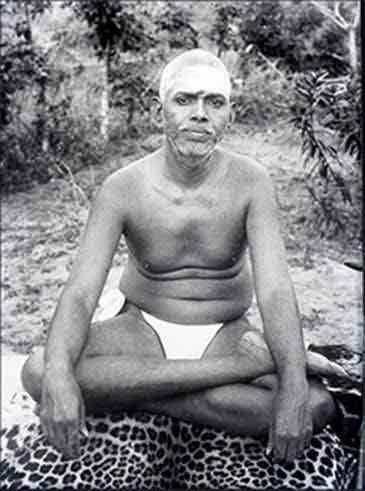
Few seekers are able to align with the deeper reality without doing anything. They need some kind of spiritual practice in order to escape the confines of the ego-controlled mind. For these seekers, Ramana Maharshi taught self-enquiry.
The ego is sustained by thoughts. And all thoughts originate from the assumption that there is an “I” that experiences something. For instance: “I am walking,” “I see a tree outside my window,” or “I live in this house.” The “I” is the subject that always focuses on some object.
Self-enquiry is centered on the question “Who am I?” The answer is not meant to be conceptual. Rather, the question is intended to move your attention onto the source of the “I,” which can be felt within as your inner awareness. Ask the question, “Who am I?” and allow the answer to appear as a feeling deep within you. By remaining focused on this inner feeling, the thoughts of “I” experiencing something gradually disappear. Then you can align with the formless unity.
You can practice self-enquiry throughout the day. When a thought arises in your mind, you might ask the question, “From whom does this thought arise?” The answer would be, “From me.” Then ask, “Who am I?” And your attention will be drawn away from thought and onto the feeling of “I” within.
After learning how to intuitively feel your inner awareness, you don’t need to start with the question “Who am I?” Instead, simply focus on the feeling of “I” within, which will gradually still your mind and enable you to come into alignment. When the ego reasserts itself and you become lost in thought, just return your attention to the feeling of “I.”
Self-enquiry is different from practices that focus on some object as a way of stilling the mind. Instead, you hold your attention on the subject, the “I” that perceives. Ramana Maharshi viewed self-enquiry as superior to other practices, such as meditation or repeating a mantra. They keep the “I” active and eventually lead a person to the same place as self-enquiry, which he viewed as a more direct path.
In the beginning stages of self-enquiry, it can be challenging to feel your inner sense of “I.” As with all practices, the grace of an enlightened teacher will help you. Immerse yourself in the teachings of Ramana Maharshi, and you will discover your inner awareness.
Then hold your attention on the “I” at every opportunity. Your past conditioning will dissolve. And eventually the “I” will disappear into the formless.
Surrender
Surrender is the practice of offering up all that you are and all that you experience to the divine. It is one of the most effective means of dissolving the illusion of separateness.
Surrender is part of the bhakti spiritual path, which also
includes devotion and love. Through devotion, you constantly turn your
attention to the divine, either in its formless state or in the form of a saint.
Through love, you open your heart to God. People of all different religions are
bhakti yogis.
To cross the vast gulf between separateness and unity, a person must let go of everything. Nothing can be held back for the ego to cling to and claim for its own. Identify the aspects of yourself that you are hoping to preserve through the spiritual journey, and allow them to be burned away by the divine light.
Complete surrender eventually brings liberation and an end to the false self, which can be frightening. Each of us has identified with the false self for countless lifetimes. We are subconsciously convinced that its death will bring an end to our existence. The fear is so intense that surrender usually happens in increments, as our past conditioning gradually dissolves.
When you reach an advanced stage of the path, there is a growing longing to merge with the divine. You recognize that the end of the false self enables you to be who you truly are.
God will wait patiently until you decide to surrender everything. And once you do, you can be free.
Prayer

Through prayer you attract grace into your life. Some people pray directly to the divine, although many find it easier to pray to an enlightened master who is associated with their religion. For instance, a Christian may pray to Jesus, Mother Mary, or one of the Christian saints.
Your prayers to an enlightened master are most effective when you have created a strong internal connection with them. However, many people don’t put forth the effort to form such a connection. They only pray when they need help or want something.
Prayer is not always answered in the way that you want. An unpleasant situation in your life is usually the result of karma created in the past. The karma may have ripened to the point that the situation cannot be avoided. Grace can then enable you to deal with it in the best possible way.
Sometimes prayers go unanswered for your own benefit. What you initially view as a bad thing may, in the long term, lead to a positive outcome. For instance, a temporary setback enables something greater to manifest in your personal life, or it weakens the ego and turns your attention to the divine.
Take advantage of God’s mercy and love. Pray for happiness and to be relieved of personal difficulties. Most important, pray that you will be guided on the path and quickly attain liberation.
Aligning with Daily Energetic Shifts
There is a rhythm to nature. During certain times of the day, the infinite is easier to access using any spiritual practice.
Between midnight and sunrise, the stillness of nature comes to the forefront, which draws your life force inward. Many seekers prefer to meditate in the early morning when their energetic system is in balance and the mind is less active.
In the hour before and after sunset, the formless reveals itself. Take advantage of the opportunity and align with it.
Visiting Holy Places
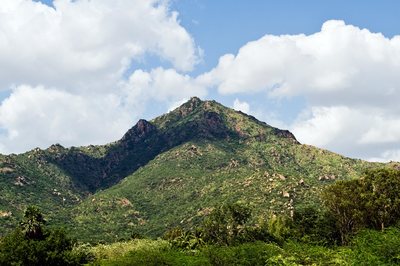
A holy place is a location on Earth that is saturated with the light of Source. The energy of the place vibrates at the highest, subtlest levels. While there, you can more easily access the higher planes of reality.
Some places have been considered holy for millennia, as if they were part of the design of creation. For instance, Arunachala Mountain in Tiruvannamalai, India, is considered to be a manifestation of Shiva.
Other locations have become holy through the grace of an enlightened master. For instance, the awakened presence of Paramahansa Yogananda can still be felt at his former residence in Encinitas, California. And at Meher Baba’s burial site in Meherabad, India, you are immersed in his grace and love.
Selfless Service
Selfless service is the spiritual practice of helping people. As an expression of love, you think of others ahead of your own needs and wants.
Helping people is spiritually beneficial when you are able to remain detached from the consequences of your good deeds. You serve others without any desire to be recognized as a “good” person. Ideally, you don’t even identify yourself as the doer of good deeds. As long as you perceive a difference between yourself and those who are being helped, you are still identifying with the ego. Focus on what is shared between you and others, the infinite awareness that exists within all things.
This content is an excerpt from the book Into the Formless by Brian D. Stephens.

